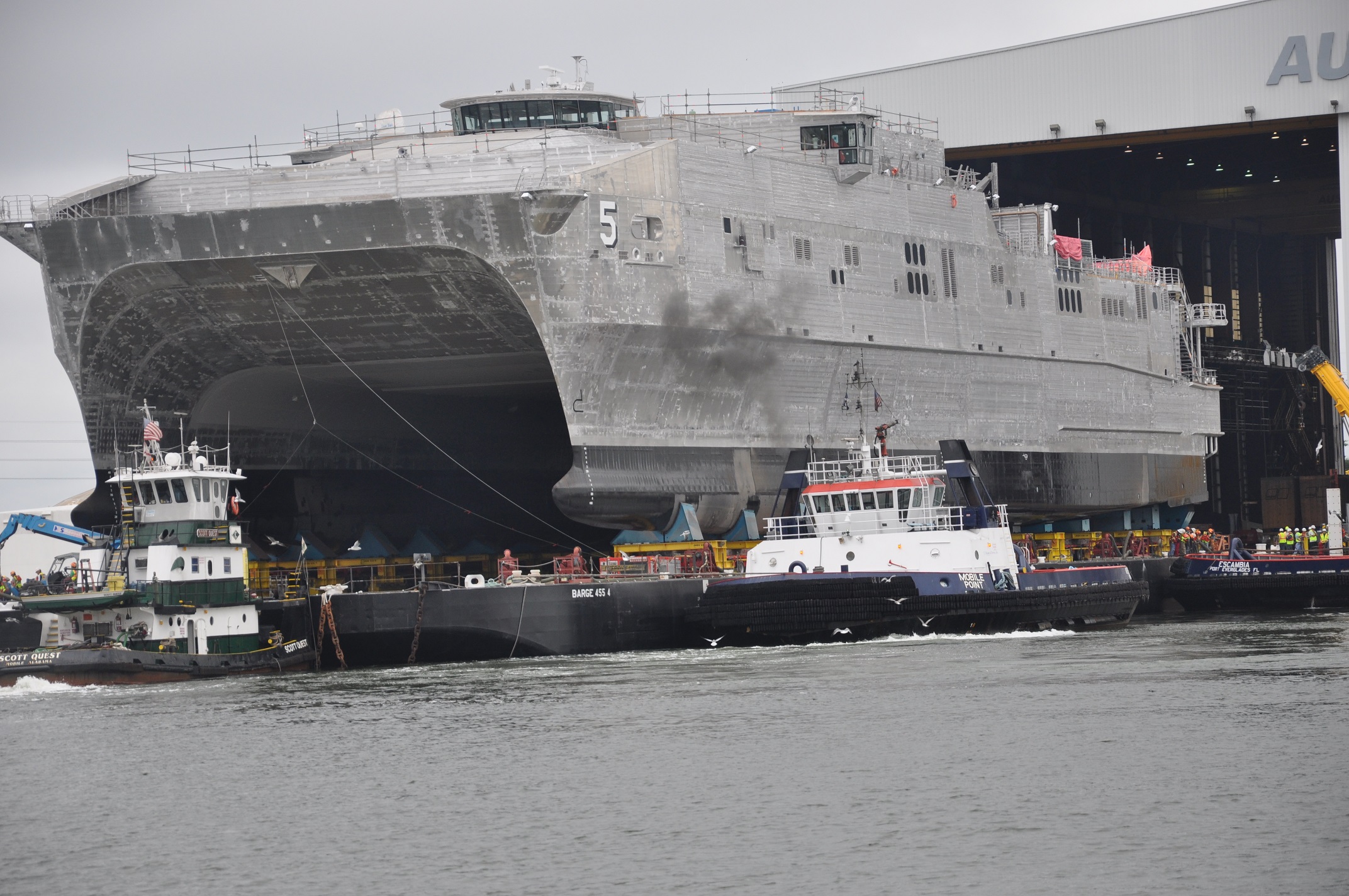
The fifth Joint High Speed Vessel has completed its acceptance trials ahead of a planned delivery to U.S. Military Sealift Command later this year, according to a Tuesday statement from Naval Sea Systems Command.
USNS Trenton (JHSV-5) conducted the trials overseen by the Navy Board of Inspection and Survey (INSURV) during a week in the Gulf of Mexico ending on March 13.
Trenton is the fifth of a class of ten JHSVs planned for MSC.
“Having completed acceptance trials, Trenton will now prepare for delivery to the Navy’s Military Sealift Command (MSC) later this year. The ship will be capable of supporting a wide range of operations including non-combatant evacuation operations, humanitarian assistance and disaster relief,” read the statement.
The Austal USA built aluminum catamarans have already filled in gaps in both international engagements and in the enduring U.S. counter-narcotics and illicit trafficking in the Caribbean and the Eastern Pacific left by the decommissioning of the Navy’s Oliver Hazard Perry-class of frigates (FFG-7).
The class delivered to the Navy starting in 2013 with USNS Fall River (JHSV-4) delivered to MSC in September.
JHSV began as a joint Army and Navy Program until the Army left the ten-ship $2.5 billion program.
The ships up to 600 tons of troops and gear. The ships displace 1,515-tons, can cruise at 35 knots at a range of 1,200 nautical miles.
The first ship, USNS Spearhead (JHSV-1) is currently deployed to the Gulf of Guinea for the international Exercise Obangame Express 2015.
The following is the complete March 24, 2015 statement from NAVSEA on completion of the acceptance trials.
USNS Trenton (JHSV 5) Completes Acceptance Trials
By Team Ships Public Affairs
MOBILE, Alabama – The Joint High Speed Vessel USNS Trenton (JHSV 5) completed acceptance trials at the Austal USA shipyard March 13, the Navy announced today.
The week-long trials were held in the Gulf of Mexico and overseen by the Navy’s Board of Inspection and Survey (INSURV). INSURV worked alongside the shipyard to demonstrate the ship’s equipment and system operation to ensure the ship is ready for delivery and fulfills all contractual requirements.
“Trenton performed very well during these trials, said Strategic and Theater Sealift Program Manager Capt. Henry Stevens. “The rigorous testing each ship undergoes ensures the Navy receives the most capable and mission ready asset at delivery.”
JHSVs are versatile, non-combatant ships capable of transporting 600 short tons 1,200 nautical miles at an average speed of 35 knots. They are equipped with airline style seating for 312 embarked forces and fixed berthing for 104. Trenton will be used for the fast intra-theater transportation of troops, military vehicles and equipment. The ship’s 15-foot shallow draft, ability to interface with roll-on/ roll-off discharge facilities, and ease of access to austere and deteriorated piers will facilitate littoral operations and port access.
Having completed acceptance trials, Trenton will now prepare for delivery to the Navy’s Military Sealift Command (MSC) later this year. The ship will be capable of supporting a wide range of operations including non-combatant evacuation operations, humanitarian assistance and disaster relief. The first four ships of the class have delivered to the Fleet. The first two ships of the class, USNS Spearhead (JHSV 1) and USNS Choctaw County (JHSV 2) have completed overseas deployments to Europe, West Africa and the Caribbean.
As one of the Defense Department’s largest acquisition organizations, PEO Ships is responsible for executing the development and procurement of all destroyers, amphibious ships, special mission and support ships and special warfare craft. Delivering high-quality war fighting assets – while balancing affordability and capability – is key to supporting the Navy’s Maritime Strategy.





